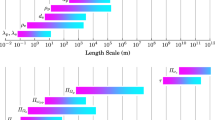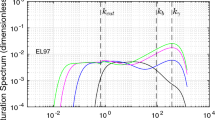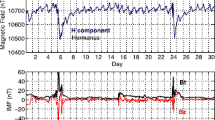Abstract
The interaction of wave-particles and wave-wave in the space plasmas are essentially non-linear or non-Gaussian processes. Using the higher-order statistical analyses methods (higher-order moments and bi-tri correlation or bi-tri spectrum), its physical properties can be described. The question addressed in this paper is that of the usefulness of higher-order statistical analysis for identification of the wave-particles interaction in space plasmas. The signals handled are from the ARCAD-3 ISOPROBE experiment on ELF frequency range, then strong electrostatic turbulence and electron density irregularities. Second and third order statistical analyses are applied: first, on time series associated with each type of measurement, then, on the two types. All results are presented for one typical case. Correlation functions estimated over the corresponding time intervals point out the existence of a, non-linear interaction between these fluctuations and electrostatic filed.
Similar content being viewed by others
References
Tsunoda R. Origin of large scale density irregularities in the ionosphere in the high latitude.Rev of Geophys, 1988,26: 719–760
Keskinen M J, Ossakow S L, Chaturvedi P K. Preliminary report of numerical simulation of intermediate wavelengthE×B gradient drift instability in equatorial spread F.J Geophys Res, 1990,95 (15): 157–166
Pincon J L, Lefeuvre F. Local characterization of homogeneous turbulence in a space plasma from simultaneous measurements of field components at several points in sppace.J Geophys Res, 1991,96(2): 1789–1802
Cerisier M, Berthelier J J. Unstable density gradients in the high latitude ionosphere.Radio Sci, 1985,20(4):755–761
Bandat J S.Nonlinear System Analysis and Identification. New York, John Wiley&sons, 1990
Kravtchenko B, Lefeuvre F, Krasnoselskikh,et al. On the use of fourth order spectral analysis to detect nonlinear wave-wave interaction.Signal Processing, 1995,42: 292
Beghin C, Karcewsk J F, Poirier B,et al. The ARCARD-3 ISOPROBE experiment for high time resolution thermal plasma measurements.Ann Geophys, 1982,38 (5): 615–630
Author information
Authors and Affiliations
Additional information
Supported by National Natural Science Foundation of China
Zhao Zhenyu; born in 1952, Ph. D.
Rights and permissions
About this article
Cite this article
Zhengyu, Z., Xianqing, S., Lefeuvre, F. et al. Identification of the wave-particles interaction in space plasma using higher-order statistics. Wuhan Univ. J. Nat. Sci. 3, 41–45 (1998). https://doi.org/10.1007/BF02827511
Received:
Issue Date:
DOI: https://doi.org/10.1007/BF02827511




